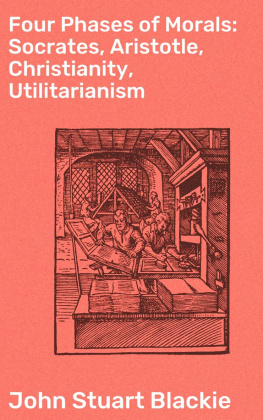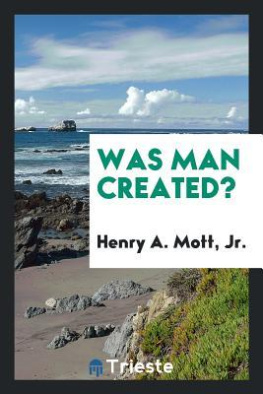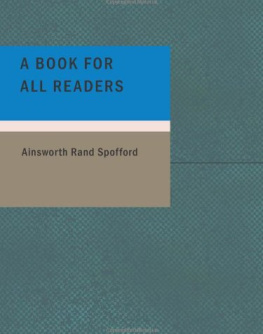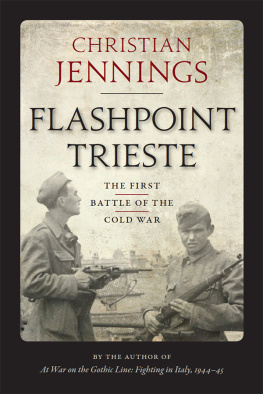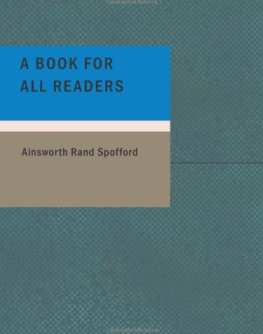I.
THE STATE.
. Aristotle .
History , whether founded on reliable record, or on monuments, or on the scientific analysis of the great fossil tradition called language, knows nothing of the earliest beginnings. The seed of human society, like the seed of the vegetable growth, lies under ground in darkness, and its earliest processes are invisible to the outward eye. Speculations about the descent of the primeval man from a monkey, of the primeval monkey from an ascidian, and of the primeval ascidian from a protoplastic bubble, though they may act as a potent stimulus to the biological research of the hour, certainly never can form the starting-point of a profitable philosophy of history.
As revealed in history, man is an animal, not only generically different from, but characteristically antagonistic to the brute. That which makes him a man is precisely that which no brute possesses, or can by any process of training be made to possess. The man can no more be developed out of the brute than the purple heather out of the granite rock which it clothes. The relation of the one to the other is a relation of mere outward attachment or dependencylike the relation which exists between the painters easel and the picture which is painted on it. The easel is essential to the picture, but it did not make the picture, nor give even the smallest hint towards the making of it. So the monkey, as a basis, may be essential to the man without being in any way participant of the divine indwelling which makes a man a man. The two are related only as all things are related, inasmuch as they are all shot forth from the great fountain-head of all vital forces, whom we justly call God .
The distinctive character of man as revealed in history is threefold. Man is an inventive animal, and he does not invent from a compulsion of nature, as bees make cells or as swallows build nests. These are all prescribed operations which the animal must perform; but the inventive faculty in man is free, in such a manner that the course of its action cannot be foreseen or calculated. It revels in variety, and, above all things, shuns that uniformity which is the servile province of brute activity. A man may live in a hole like a fox, but his proper humanity is shown by building a house and inventing a style of architecture. A man can sing like a bird, butwhat the bird cannot dohe can make a harp or an organ. He can scrape with his nails like a terrier, but, as a man manifesting his proper manhood, he prefers to make a shovel of wood and a hatchet of stone or iron. The other animals, however cunning, and often wonderfully adaptable in their instincts, are mere machines. Man makes machines. In this respect he is justly entitled to look upon himself as the God to the lower animals, just as the sheriff in the counties by delegated right represents the supreme authority of the Crown. But, above all things, man is a progressive animal,not merely progressive as the grass grows from root to blade and from blade to blossom to perfect its individual type of vegetable life, but advancing from stage to stage and mounting from platform to platform for the perfectionation of the race; nor even progressive as plants and fruits are improved by culture and favourable surroundings, and what is called forcing, or as the breed of sheep and cattle is improved by selection. No doubt progress of this kind is made by man as well as by plants and brutes; but his most distinctive human progress is made, not by imposition from without, but by projection from within. These projections from within are what in philosophical language is called the idea; they proceed from the essential nature of mind, whose imperial function it is to dictate forms, as it is the servile function of the senses to receive impressions. These intelligent forms, coming directly from the divine source of all excellence, and projected from within with sovereign authority to shape for themselves an outward embodiment, constitute what in art, in literature, in religion, and in social organisms, is called the ideal; and man may accordingly be defined as an animal that lives by the conception of ideals, and whose destiny it is to spend his strength, and, if need be, to lay down his life, for the realisation of such ideals. The steps of this realisation, often slow and painful, and always difficult, are what we mean by human progress; and it is the dominant characteristic of man, of which amongst the lower animals there is not a vestige, neither indeed could be; for so long as they have no ideas, neither reason nor the outward expression of reason in languagetwo things so closely bound together that the wise Greeks expressed them both by one word, so long must it be ridiculous to think of them shaping their career according to an inborn type of progressive excellence. To do so is exclusively human. Hence our poems, our high art, our churches, our legislations, our apostleships, our philosophies, our social arrangements and devices, our speculations and schemes of all kinds, which, though they are sometimes foolish, and always more or less inadequate, deliver the strongest possible proof that man is an animal who will rather die and embrace martyrdom than be content to live as the brutes do, neither spurred with the hope of progress nor borne aloft on the wings of the ideal.
Of the very earliest state of human society, as we have already said, history teaches nothing; but, as man is a progressive animal, and the plan of Providence with regard to him seems plain to let him shift for itself and learn to do right by blundering, as children learn to walk by tumbling, we may safely say that the easier, more obvious, and more rude forms of living together must have preceded the more difficult, the more complex, and the more polished. And in perfect consistency with this presumption, we find three social platforms rising one above the other in human value, duly accredited either by monuments, by popular tradition, or by the evidence of comparative philology. These three are(1) The prehistoric or stone period, from which such a rich store of monuments has been set up in the Copenhagen Museum, and the existence of which is indicated in Gen. iv. 22 as antecedent to Tubal Cain, the instructor of every artificer in brass and iron. (2) The shepherd or pastoral stage, represented by Abel (Gen. iv. 2), in which men subsisted from the easy dominance which they asserted over wild animals, and from fruits of the earth requiring no culture. (3) The agricultural stage, when cereal crops were systematically and scientifically cultivated, which, of course, implied the limitation of particular districts of ground to particular proprietors, and those agrarian laws which caused the Greek Demeter to be honoured with the title of , or lawgivera step of marked and decided advance, insomuch that we may justly attribute to it the redemption of society from the


